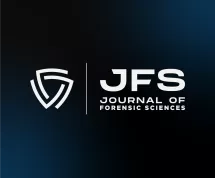Search
Explore content from JFS, ASB, the AAFS Newsfeed, and other content using the search bar or filters.
Best Practice Recommendation for Limited Friction Ridge Examinations
Best Practice Recommendation for Mass Fatality Incident Management
Standard for Forensic Autosomal STR DNA Statistical Analyses
Standard for the Documentation and Processing of Shooting Scenes
Best Practice Recommendation for Age Estimation in Forensic Anthropology
Evaluation of the ForenSeq™ MainstAY workflow for forensic DNA samples
This study evaluated the performance and limitations of the ForenSeq™ MainstAY chemistry on the MiSeq FGx® Sequencing System, which is approved for National DNA Index System (NDIS) use. This study included baseline performance, sensitivity and reproducibility studies, challenging...
2026 Annual Business Meeting - Voting Member Documents
Interested in Serving on a Committee?
Building Our Collective Legacy Together
Register Now for Best Prices!
Volunteers Needed for Annual Business Meeting

Toward a documentary standard for performance testing of terrestrial laser scanners used...
This paper documents efforts by members of the Crime Scene Investigation and Reconstruction (CSIR) subcommittee within the Organization of Scientific Area Committees (OSAC) for Forensic Science, in collaboration with researchers at the National Institute of Standards and Technolo...
Semen extraction efficiency and recovery before and after washing from reusable period...
When sexual assault evidence kits do not yield biological evidence demonstrating sexual contact, clothing such as undergarments is evaluated for the presence of semen. Menstrual underwear is a new type of undergarment and feminine product encountered as evidence in sexual assault...